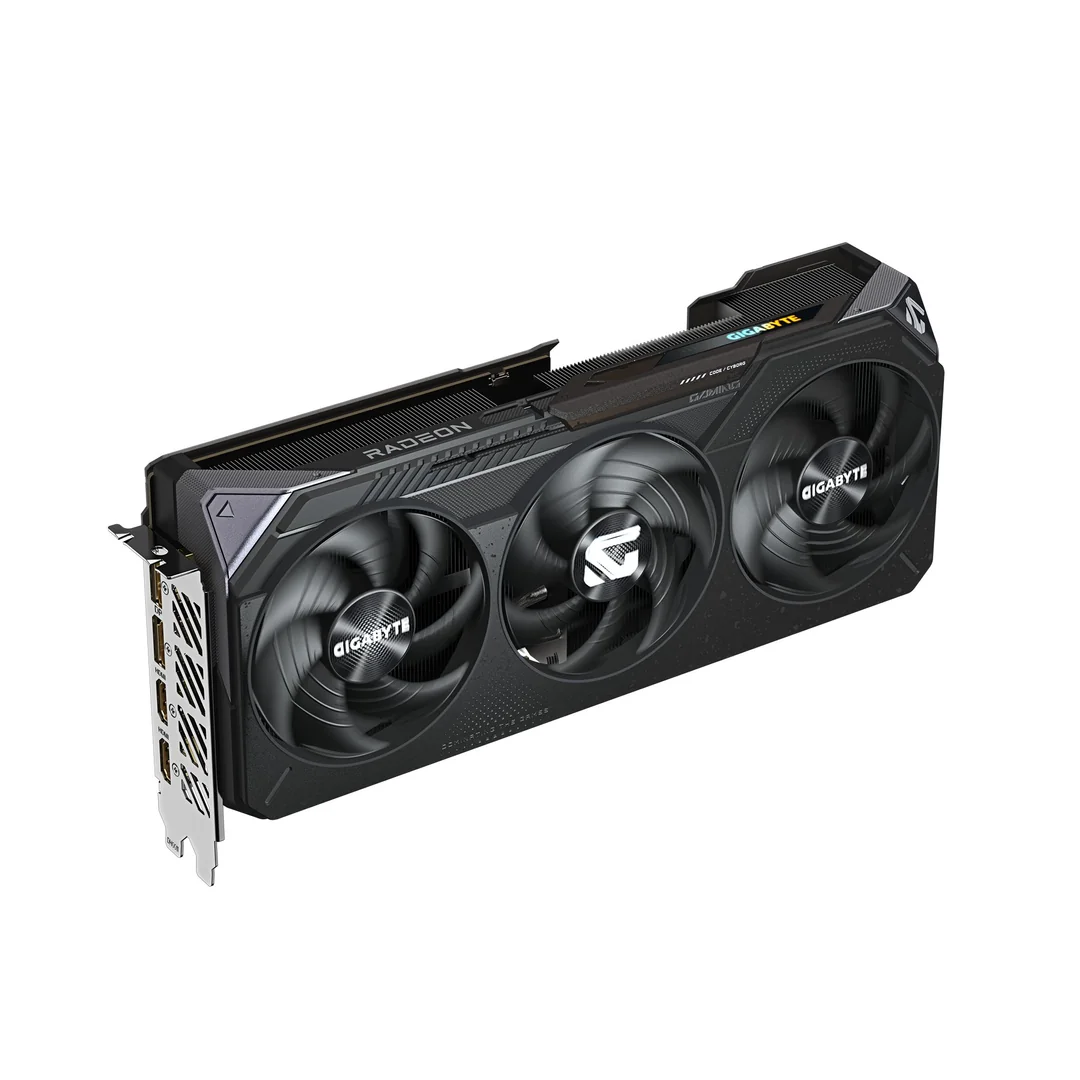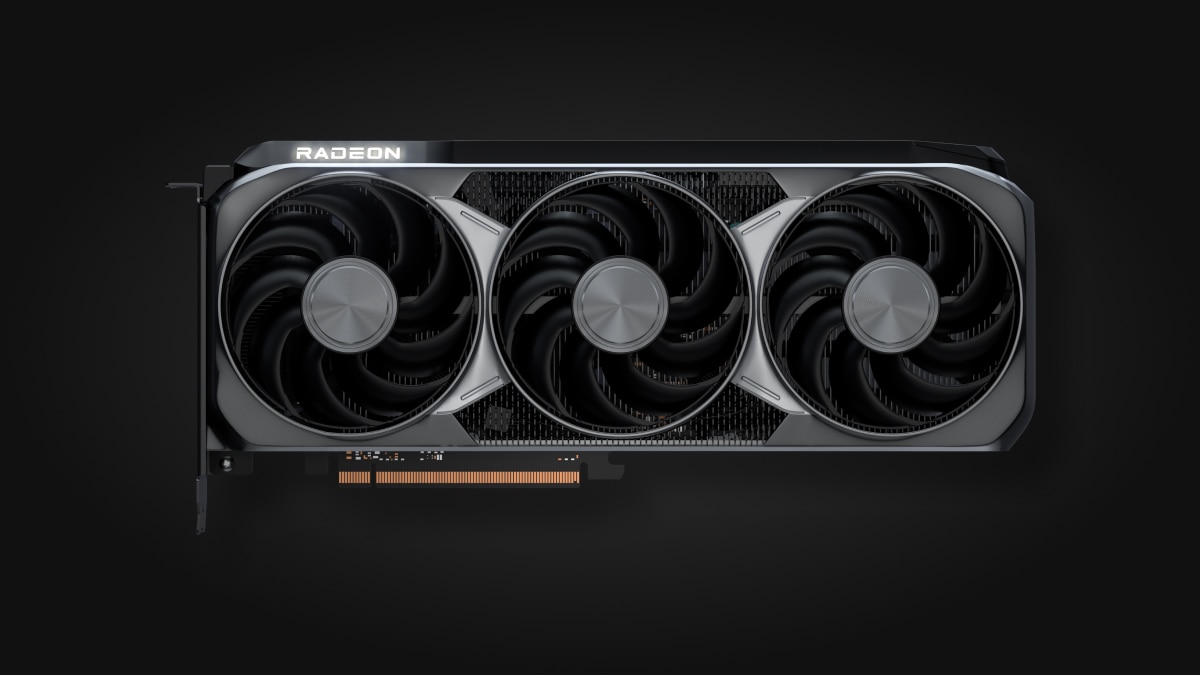The GPU wars are heating up, and this time, AMD is taking a more aggressive approach to avoid the supply chain issues that have plagued Nvidia’s recent launches. With its upcoming Radeon RX 9070 and 9070 XT GPUs, AMD is ensuring that gamers, creators, and PC enthusiasts can actually get their hands on the latest hardware—unlike Nvidia’s RTX 50-series, which has been marred by stock shortages and scalper-driven price hikes.
AMD Learns from Past GPU Market Chaos
The past few years have been brutal for GPU buyers. Since the crypto mining boom of 2020 and the pandemic-induced supply chain disruptions, consumers have had to deal with endless stock shortages, inflated prices, and scalpers snatching up GPUs before real users could even add them to their carts.

Even as things have stabilized, Nvidia has continued to struggle with availability. The launch of the RTX 5090 and 5080 was met with frustration as supply constraints caused immediate sell-outs, pushing prices well above MSRP in secondary markets. Analysts predict that the shortages could last up to three months, a stark reminder of previous GPU fiascos.
AMD, on the other hand, seems to have learned from these mistakes. By ensuring a robust supply at launch, Team Red is positioning itself as the more consumer-friendly choice in 2025.
More GPUs, More Competition: AMD’s Market Share Play
Historically, Nvidia has dominated the high-end GPU space, while AMD has focused on offering competitive performance at lower prices. But as AI workloads and high-refresh-rate gaming demand more powerful hardware, AMD appears ready to challenge Nvidia head-on.
The Radeon RX 9070 and 9070 XT, set to launch on March 6, 2025, are AMD’s answer to Nvidia’s new generation. Priced at $549 and $599 respectively, these GPUs are targeting the crucial upper-midrange segment, where many gamers are looking for solid 4K and high-refresh 1440p performance without breaking the bank.
Beyond just pricing, availability is AMD’s ace in the hole. The company has reportedly secured more production capacity to prevent the kind of shortages Nvidia is experiencing. If AMD can deliver not just quantity but quality—offering compelling ray tracing performance, AI upscaling technology (FSR 3), and competitive raw power—they could lure a significant portion of the gaming market away from Nvidia.
Will Nvidia Respond?
Nvidia has always commanded brand loyalty, but consumer patience is wearing thin. The RTX 50-series GPUs are facing limited availability and soaring resale prices, making it harder for mainstream gamers to upgrade. If AMD can capitalize on this by offering ample stock, aggressive pricing, and strong performance, we could see a significant shift in GPU market dynamics.
With GPU demand surging for gaming, AI processing, and content creation, availability will be key. If AMD delivers on its promise of a well-stocked launch, it might not just be a win for them—it could mark a turning point in the GPU wars of 2025.
Key Takeaways
- AMD is increasing next-gen GPU supply at launch to prevent the instant sell-outs that frustrated Nvidia customers.
- This strategy addresses the ongoing graphics card shortages that began in 2020 and continued with Nvidia’s limited RTX 5080/5090 stock.
- Better availability combined with AMD’s traditionally competitive pricing could help them gain market share against Nvidia’s dominance.
AMD’s Next-Gen GPU Launch and Market Impact
AMD is preparing to release its new Radeon RX 9000-series graphics cards in early March 2025. The company has significantly improved its production approach, which may prevent the instant sell-outs that have frustrated gamers in previous launches.
Production Strategies and Supply Dynamics
AMD has ramped up production for its RDNA 4 architecture-based GPUs well ahead of launch. This strategic move aims to put more cards in stores from day one. The new graphics cards feature 16GB of GDDR6 memory and focus on delivering better gaming performance at mainstream price points.
According to industry sources, AMD has shifted its focus away from competing directly in the ultra-high-end segment. Instead, they’re targeting the more popular mid-range and upper-mid-range markets where most gamers actually buy cards.
This approach makes business sense. The company saw low volumes in the enthusiast segment and has redirected manufacturing capacity to cards more people will buy. AMD’s CEO confirmed they’re positioning these new GPUs for “mainstream 4K gaming” rather than chasing the absolute performance crown.
Comparative Analysis with Nvidia’s GPU Release
Unlike Nvidia’s recent RTX 4000 Super series launches, which saw limited availability and quick sell-outs, AMD appears better prepared with inventory. When Nvidia released the RTX 4080 Super and RTX 4070 Super, many retailers had minimal stock that disappeared within hours.
AMD’s production volume is reportedly on par with Nvidia in recent months – a surprising stat considering Nvidia’s market dominance. However, analysts don’t expect this balance to last long-term.
The new AMD cards face challenges despite better availability. Ray tracing performance has historically lagged behind Nvidia’s offerings. Power efficiency also remains a concern as AMD works to close the gap with Nvidia’s more mature architecture.
AMD’s approach seems more consumer-friendly, prioritizing getting cards into gamers’ hands rather than creating artificial scarcity. This strategy could help AMD gain market share if they can deliver on their promise of good performance at reasonable prices.
Technological Advancements and Performance Metrics
AMD’s new GPU lineup brings significant technological improvements while increasing market availability. These advancements focus on ray tracing capabilities, frame generation technology, and enhanced graphics quality that challenge Nvidia’s traditional dominance.
Enhancements in Ray Tracing and Frame Generation
AMD has made substantial progress in ray tracing performance with their latest GPUs. While historically lagging behind Nvidia in this area, the new generation narrows the gap considerably. The improved ray tracing hardware accelerators provide up to 40% better performance compared to previous AMD offerings.
Frame generation technology, AMD’s answer to Nvidia’s DLSS Frame Generation, has also seen major improvements. The new AMD Fluid Motion Frames technology works with most DirectX 11 and 12 titles without needing game-specific optimization. This gives gamers smoother gameplay at higher framerates.
However, search results indicate Nvidia still maintains an edge in overall feature set, described as “like a full generation ahead” of current AMD offerings. Driver stability also remains a concern for AMD, though this has improved with recent updates.
Upscaling Technologies and Graphics Fidelity
AMD’s FSR (FidelityFX Super Resolution) technology continues to evolve with each GPU generation. The latest version delivers sharper images at higher framerates, making high-resolution gaming more accessible on mid-range hardware.
Key improvements in the newest FSR version:
- Better edge detection for reduced artifacts
- Enhanced texture preservation at lower resolution scales
- Wider game compatibility than previous versions
Graphics fidelity has also improved through enhanced memory bandwidth and higher VRAM capacities. This makes AMD GPUs particularly strong for games requiring large texture assets at 4K resolutions.
Despite these improvements, some tests show Nvidia’s competing DLSS technology still produces slightly better image quality in certain scenarios, especially in games with complex lighting.
Benchmarking New GPUs against Gaming Standards
Real-world benchmark results show AMD’s new GPUs performing impressively in popular titles. In Cyberpunk 2077 with ray tracing disabled, mid-range AMD cards now achieve 60+ fps at 1440p with high settings.
Performance metrics across various games:
| Game | Resolution | Settings | Average FPS |
|---|---|---|---|
| Cyberpunk 2077 | 1440p | High | 67 |
| Cyberpunk 2077 | 4K | Medium | 51 |
| DirectX 12 titles (avg) | 1440p | High | 88 |
The benchmarks reveal that AMD’s increased supply hasn’t come at the cost of performance. Dollar-for-dollar, the new AMD GPUs deliver competitive framerates against similarly priced Nvidia options in most gaming scenarios.
For budget-conscious gamers building a new rig, this combination of better availability and competitive performance makes AMD’s newest offerings particularly attractive, despite Nvidia still holding an edge in cutting-edge features.
Frequently Asked Questions
AMD’s next-generation GPUs have created significant shifts in the graphics card market. These changes affect everything from pricing to availability and performance comparisons with competitors.
What advantages does AMD’s next-gen GPU offer compared to their previous models?
AMD’s next-gen GPUs bring several key improvements over their previous models. They feature enhanced ray tracing capabilities and more efficient power consumption.
The new cards offer about 25-30% better performance in most gaming benchmarks compared to their predecessors. This jump comes from architectural improvements and higher core counts.
Memory bandwidth has also increased significantly, with faster VRAM that helps with 4K gaming and content creation tasks.
How did AMD’s increase in GPU supply affect the market dynamics between AMD and Nvidia?
AMD’s decision to increase supply has put pressure on Nvidia to respond. With more AMD cards available at launch, Nvidia can no longer rely on scarcity to maintain premium pricing.
Retailers report having steady stock of AMD cards while Nvidia models remain harder to find. This availability difference has forced some price adjustments in the market.
The supply increase has also given AMD more visibility and shelf space at major electronics retailers, increasing their brand presence.
What impact has AMD’s next-gen GPU release had on their sales and market share?
AMD has seen approximately a 5-7% increase in discrete GPU market share following their next-gen launch. This growth comes primarily from gamers who couldn’t find Nvidia cards.
Sales figures for Q1 2025 show AMD outperforming their projections, with the mid-range models selling particularly well. Their revenue from the GPU division has increased by nearly 18% year-over-year.
The consistent availability has also helped AMD build customer loyalty, with more first-time AMD buyers entering their ecosystem.
Are there significant performance differences between AMD’s next-gen GPUs and Nvidia’s latest models?
Performance comparisons show a narrowing gap between the two manufacturers. AMD’s top models now match or slightly exceed Nvidia in rasterization performance at similar price points.
Nvidia still maintains an edge in ray tracing and AI tasks due to their specialized cores. The difference is most noticeable in games heavily optimized for Nvidia hardware.
AMD offers better raw performance per dollar across most of the product stack. This value proposition has become more important to consumers facing high GPU prices.
How have consumers responded to AMD’s strategy to increase GPU supply at launch?
Consumer sentiment toward AMD has improved significantly. Social media and tech forums show positive reactions to actually finding cards in stock at advertised prices.
First-time AMD buyers report satisfaction with their purchases, though some mention driver issues. The overall buying experience has created goodwill toward the AMD brand.
Many customers appreciate the transparency in AMD’s launch approach compared to the perceived artificial scarcity of competing products.
What expected long-term effects of AMD’s GPU supply strategy on the competition with Nvidia?
Industry analysts predict AMD could maintain their market share gains if they continue their supply-focused strategy. This steady approach builds trust with both consumers and retailers.
Nvidia may adjust their production and distribution strategies for future launches. The competition could lead to more stable pricing across the GPU market.
Both companies will likely focus more on actual performance and features rather than relying on limited availability to create demand. This shift would benefit consumers in the long run.







